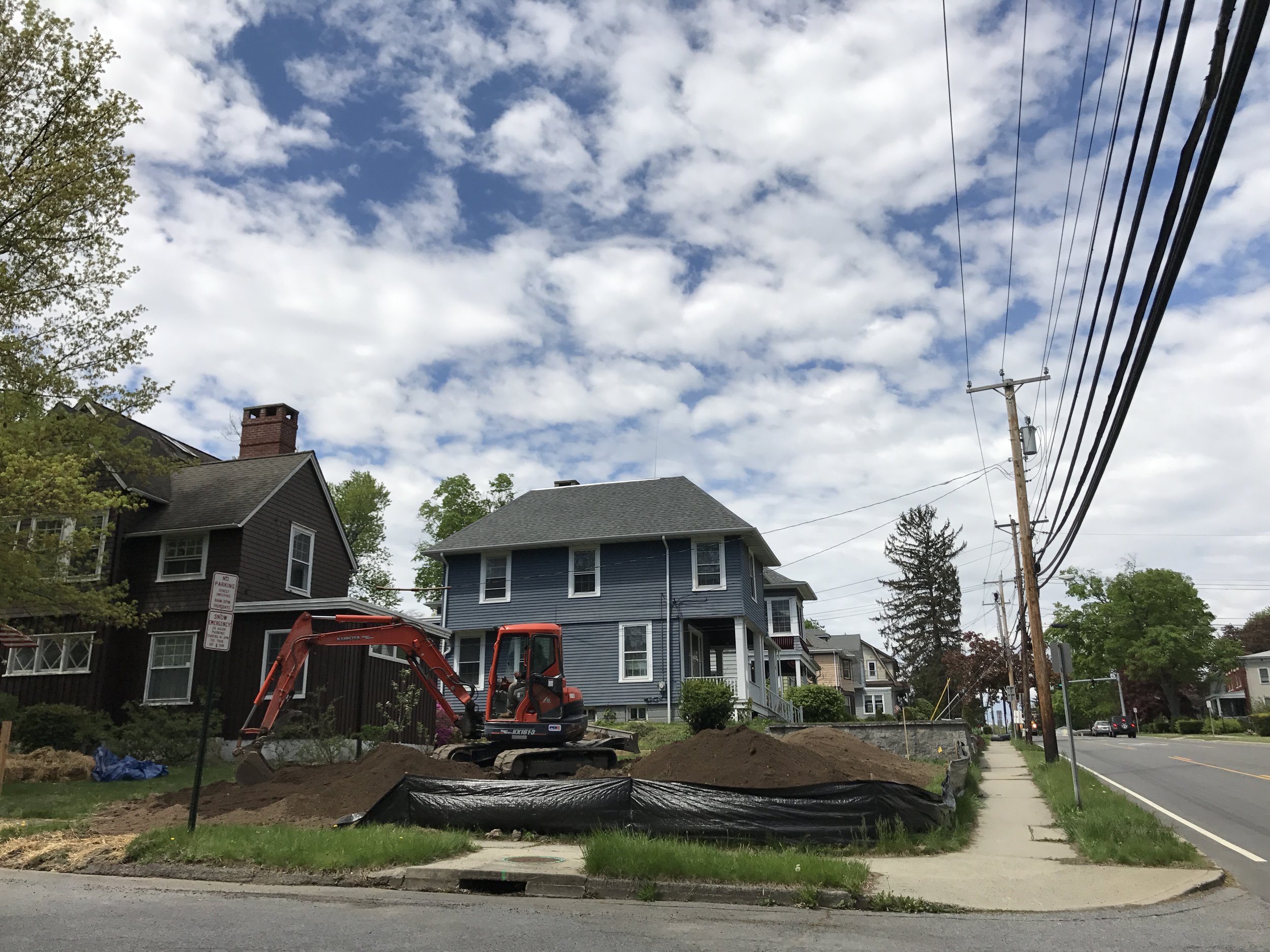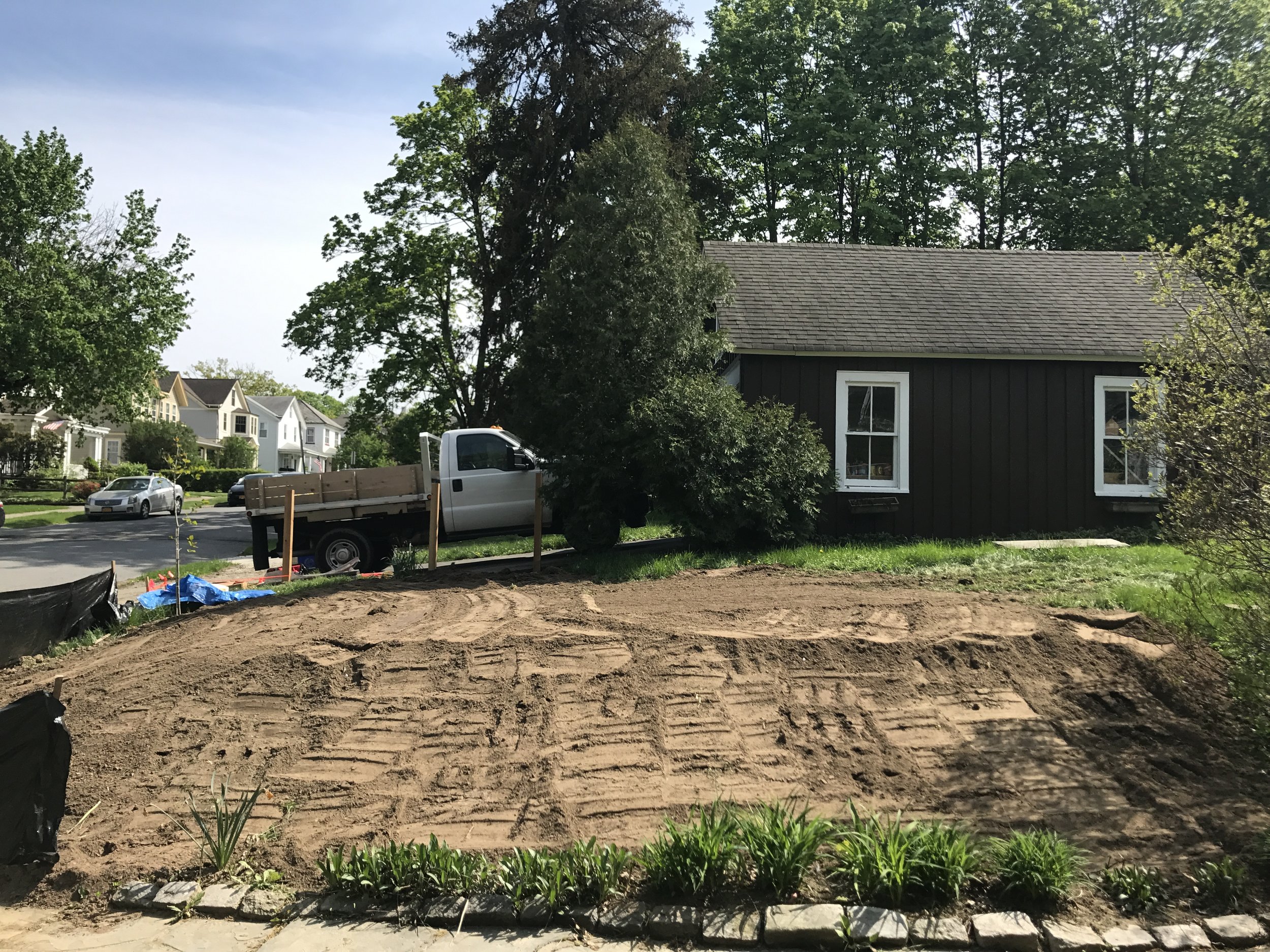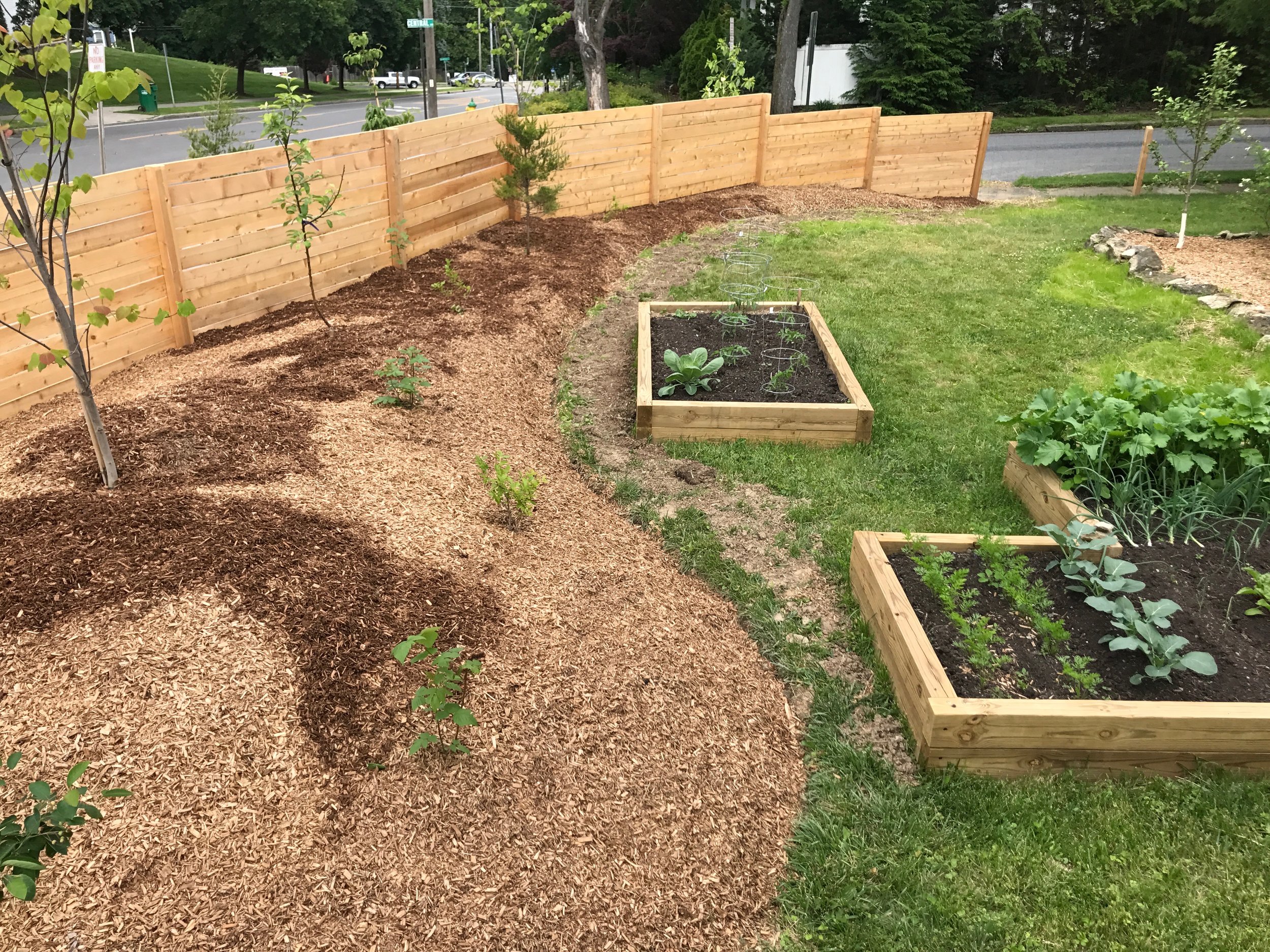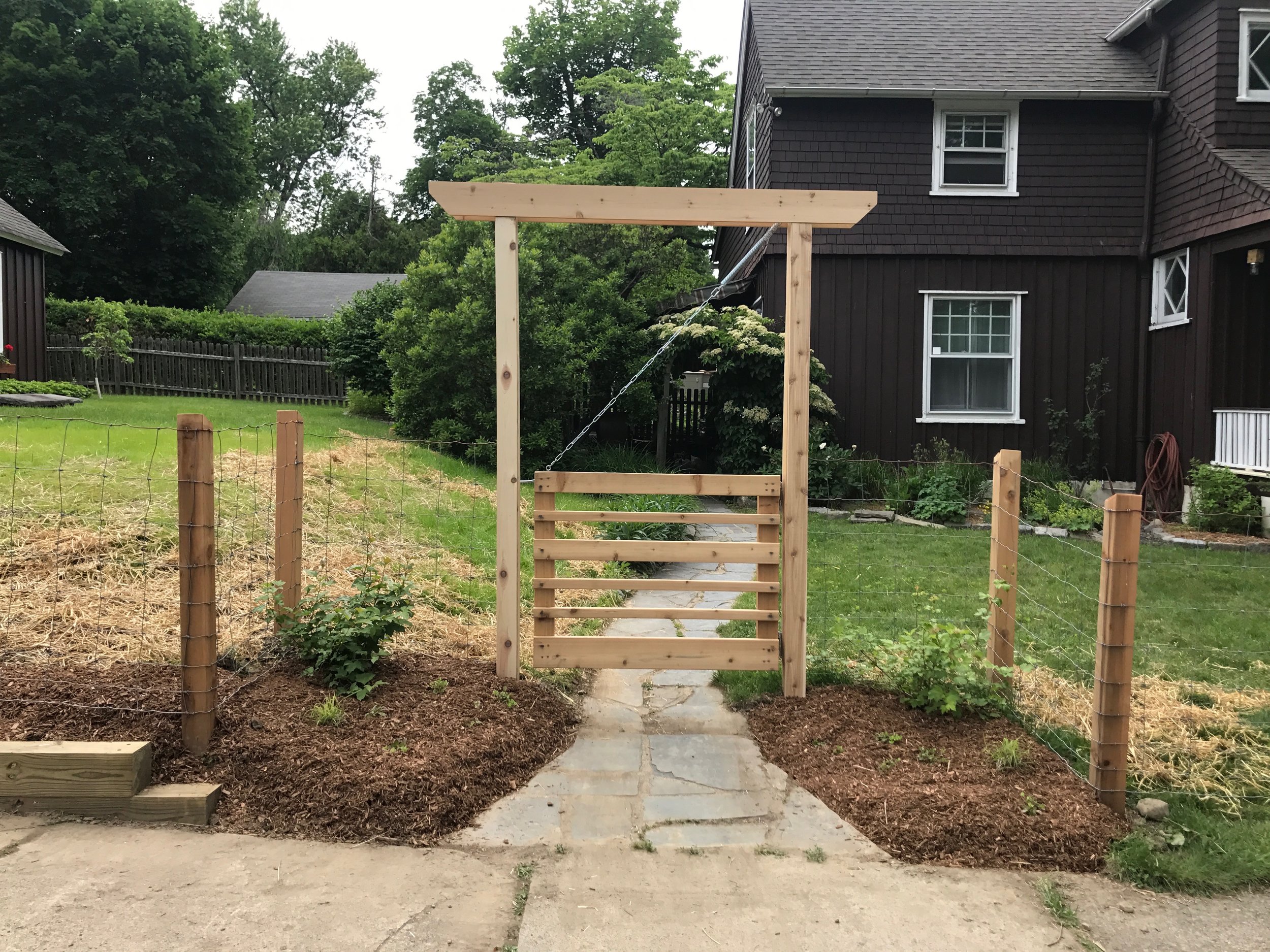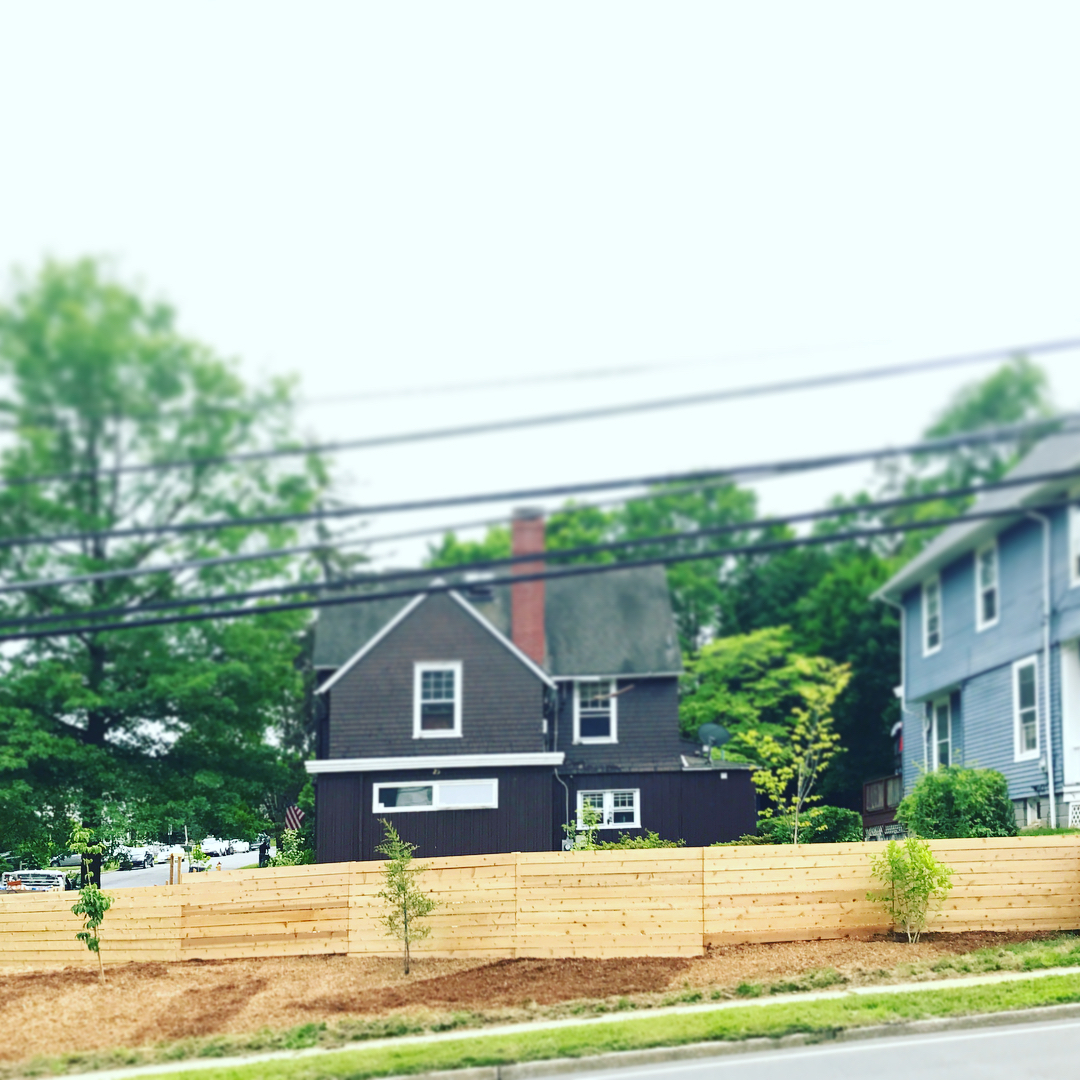At a busy corner in Newburgh you can see a striking cedar fence, with young trees growing alongside it. If you look closer, you can see that the fence actually weaves in front and behind the peaks of a large earthen berm, which is dotted with plants and elevates the garden above the sloping street-side. Beyond the fence you can see the fruits of native shrubs such as blueberries and blackberries, while vegetables grow alongside in raised agricultural beds. The fence, the trees, the berms, and the edible plant life are all part of a solution, a solution to the noisiness and visual clutter that crops up in urban environments.
When our clients approached us with their problem, we set to work, creating and implementing the design described above. Since there were regulations governing how tall property-owners can build street-side fences in Newburgh, we changed the topography. The earthen berm elevates the original site by three feet, and the cedar fence that weaves the berms provided our clients with the visual privacy they desired while still following city regulations. The fence also separates edible plantings from non-edible plantings, with the edible landscape on the interior of the fence, where it will be easily accessible to the residents.
On the other side of the house, noise wasn’t a huge problem, and the homeowners wanted an inviting entrance for neighbors and friends. As a result, the cedar fence transitions to a wire fence along the quiet street, and a wooden gateway provides a warm welcome to visitors. There is also an arbor full of native plant species.
In the future, the earthen berm will be planted more fully with ferns, sedges, and other herbaceous species. As the trees on the berm grow, they will created an elevated canopy effect, as passersby descend the hill below the treetops. We will also be adding a screen planting on the far side of the home, and a pergola that will provide both shady respite and verdant structure.


